Dal Mangodi Ki Sabzi is a traditional vegetarian Indian curry from North India cooked without onion or garlic.
Estimated reading time: 5 minutes
During the dull summer days, when there is a limited variety of vegetables available, wholesome curries like taazi mangodi ki sabzi add a great variety to the menu. Taazi means fresh, and Mangodi is the regional name for moong dal pakodi. Hence, the literal translation is fresh moong dal fritters curry.
I learnt this particular curry recipe from my mother, a vegetarian who often tries to be creative with everyday meals.
The mangodi ki sabzi has a strong aroma and flavour of asafoetida (hing). The chopped coriander leaves provide a subtle, fresh aroma to the sabzi. When you cook pakodi ki sabzi, a strong sulfur-rich aroma hangs in the kitchen. As kids, we found that peculiar smell weirdly pleasant and tempting.
Ingredients You’ll Need
- Yellow Moong Dal is used to make the paste and later fritters (taazi mangodi).
- Tomato forms the base of the curry.
- Ginger gives a spicy taste to the sabzi.
- Asfaoetida (hing) is the key flavouring agent in this mangodi ki sabzi.
- Spices: Turmeric Powder, Red Chilli Powder, Coriander Powder, and Cumin.
- Vegetable Refined Oil, Coriander Leaves, Green Chilli, Salt, and Water
How To Make Mangodi Ki Sabzi
Step 1: Make Dal Paste for Mangodi
- Clean, rinse, and soak moong dal in water for 4 – 5 hours.
- Next, drain all the water. Grind it to a smooth paste without using water, along with ginger, green chilli, and asafoetida.
- Dal Paste should be thick and smooth.
- Season it with salt, turmeric, and a tiny bit of chilli powder.
- Whisk till it is light and fluffy.
Step 2: Fry Taazi Mangodi
- Heat oil for frying in a pan.
- Drop a teaspoon of dal batter in the hot oil. If it is frying nicely, add the remaining batter into the hot oil and fry over medium heat till they are crisp, golden, and cooked from the inside.
- Transfer the taazi mangodi to a plate lined with a paper towel.
Step 3: Prepare Curry
- Make paste of tomato in a blender.
- Heat oil in a kadhai. Add cumin, asafoetida, and ginger. Fry for a minute to release their aroma.
- Add tomato paste followed by spices and salt. Saute over low heat till oil separates from the masala.
- Add water. Stir to combine. Let the curry come to a boil. Reduce the heat. Let it simmer over low heat, covered for 5 – 6 minutes.
Step 4: Final Assembly
- Add the fried mangodi to the simmering curry.
- Let the curry simmer for another 5 minutes. You will notice mangodi are getting double in size and absorbing the liquid.
- Turn off the heat. Add chopped fresh coriander.
Mangodi Ki Sabzi is ready to serve.
Serving Suggestion
Our favourite combination is mangodi ki sabzi with piping hot phulka and kachumber salad. If you prefer, you can serve it with steamed rice. There is an unsaid comfort in sampling this hearty, soupy curry while making a slurpy sound.
Mangodi Ki Sabzi is a comforting main course dish for a no-onion and no-garlic meal menu.
More Indian Sabji Recipes
- Arbi Ki Sabji
- Aloo Ki Sabzi
- Gatte Ki Sabzi
- Kathal Ki Sabzi
- Dahi Lauki Ki Sabji
- Sev Tamatar Ki Sabji
- Kachhe Kele Ki Sabji
- Kamal Kakdi Ki Sabji
follow us on Youtube and Instagram for video recipes.
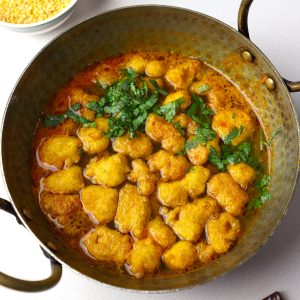
Dal Mangodi Ki Sabzi
- Mixer Grinder
- Heavy Bottom Kadhai
Ingredients
Ingredients For Mangodi
- ½ Cup yellow moong dal
- a pinch of asafoetida
- ½ teaspoon turmeric powder
- ½ teaspoon red chili powder
- ⅓ teaspoon salt or to taste
- 1 green chilli (optional)
- ½ inch ginger, chopped
- Oil to deep-fry the mangodi
Ingredients For Curry
- 1 tablespoon vegetable refined oil
- 1 teaspoon cumin seeds
- ½ inch ginger, grated
- ¼ teaspoon hing (asafoetida)
- 2 small size tomato, chopped
- ½ teaspoon turmeric powder
- ½ teaspoon red chilli powder
- 1 teaspoon coriander powder
- ½ teaspoon salt or to taste
- 3 Cup water
- handful of fresh coriander leaves, chopped
Instructions
- To make the moong dal pakodi, wash and soak the moong dal in water for 4 – 5 hours.
- Next, drain all the water. Grind it to a smooth paste without using water, along with ginger, green chilli, and asafoetida. Dal Paste should be thick and smooth.
- Season it with salt, turmeric, and a tiny bit of chilli powder. Whisk till it is light and fluffy.
- Heat oil in a deep-frying pan over medium flame. Once the oil is hot enough, drop tiny grape size portion of lentil paste in the oil. Make sure there is enough space between each pakodi to turn. Maintain the heat at medium-high. Turn the fritters once crisp from one side. Fry over medium heat till they are crisp, golden, and cooked from the inside.
- Transfer the mangodi to a plate lined with paper towel. Similarly, prepare the moong dal pakodi with the remaining batter.
- To make the curry, grind tomatoes to a coarse paste in food processor or blender.
- Heat oil in a kadhai. Add cumin, asafoetida, and ginger. Fry for a minute to release their aroma.
- Add cumin and hing. Fry for a minute. Add grated ginger and stir.
- Add tomato paste followed by spices and salt. Saute over low heat till oil separates from the masala.
- Add water. Stir to combine. Let the curry come to a boil. Reduce the heat. Let it simmer over low heat, covered for 5 – 6 minutes.
- Add the fried mangodi to the simmering curry. Let the curry simmer for another 5 minutes. You will notice mangodi are getting double in size and absorbing the liquid.
- Turn off the heat. Add chopped fresh coriander. Cover the pan with the lid and let the curry sit this way till ready to serve.
- Serve Pakodi Ki Sabzi with Phulka for lunch/dinner.
Recipe Notes:
- Do not add water while grinding the moong dal. You need thick batter to make mangodi.
- After adding mangodi to the curry, do not simmer it for too long.

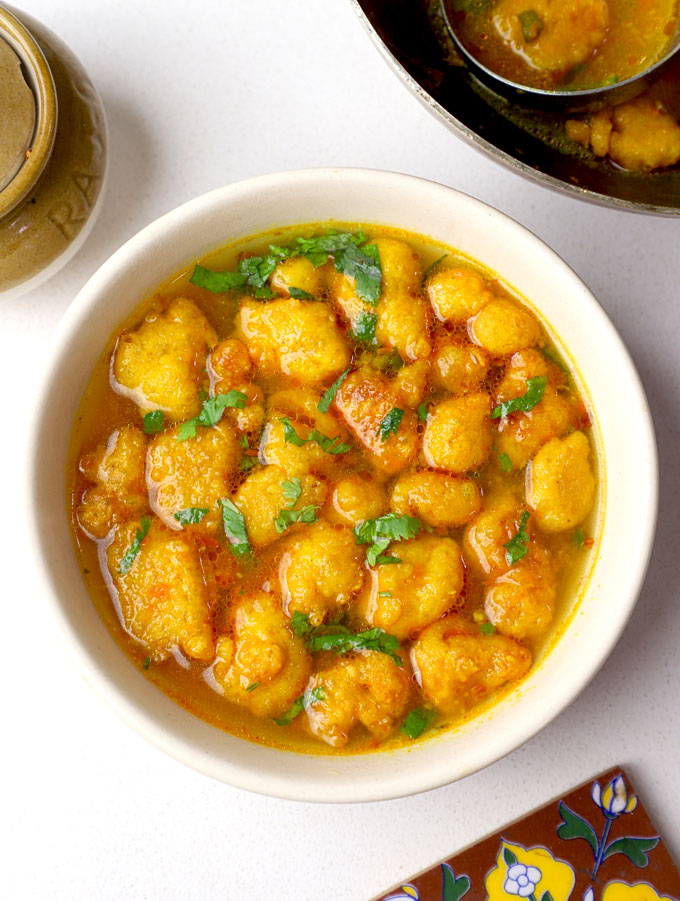
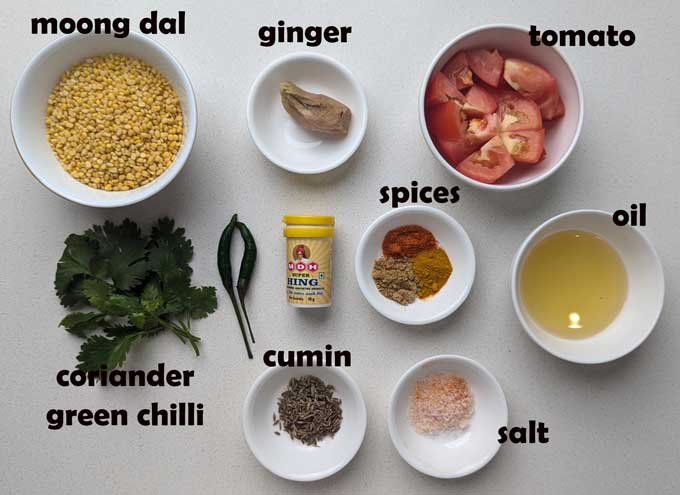
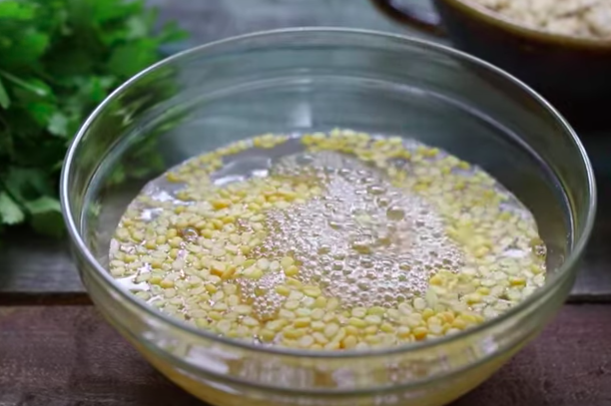
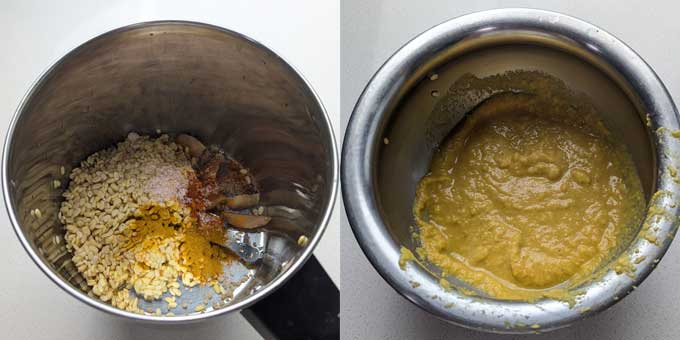

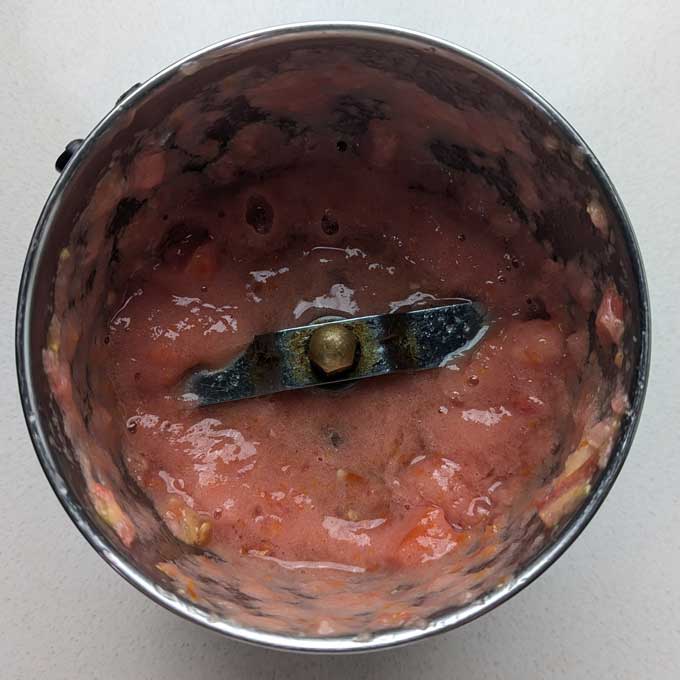
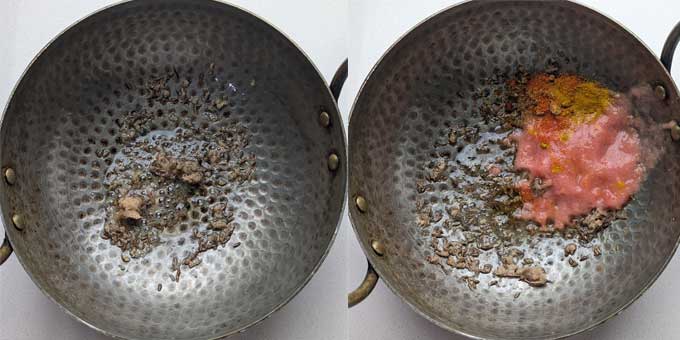
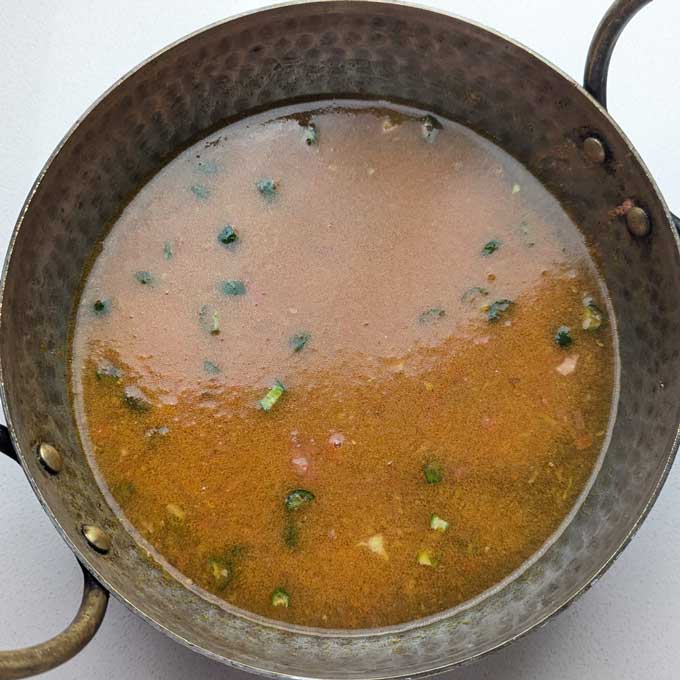
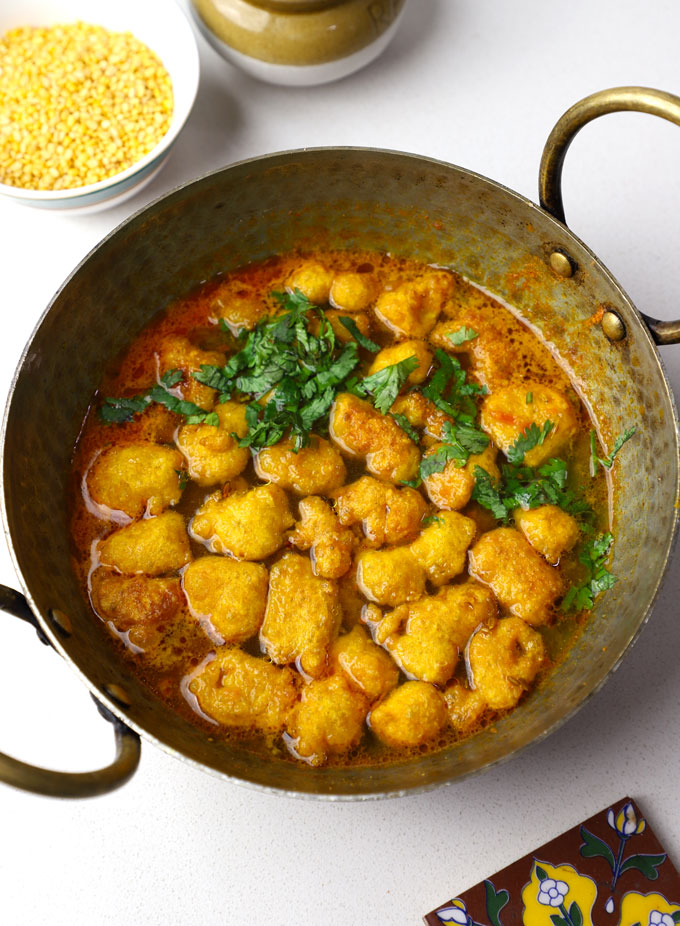


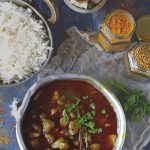

Chandresh says
Jain food 🙂 ..Very good presentation ..It’s a all time fav. curry at my house
Dr Martin Huang says
HI Hina, this is a unique recipe that I’ve come across. Normally, the curry recipes that I know are those that are thick and at one look you will know that it’s curry. But your curry soup has a clear base! looks like tom yam soup to me.
Thanks for sharing!
Hina Gujral says
Haha. I like the comparison. Yes, it is a light and soupy curry. Perfect to deal with hot Indian summer when robust curries are tough to digest.